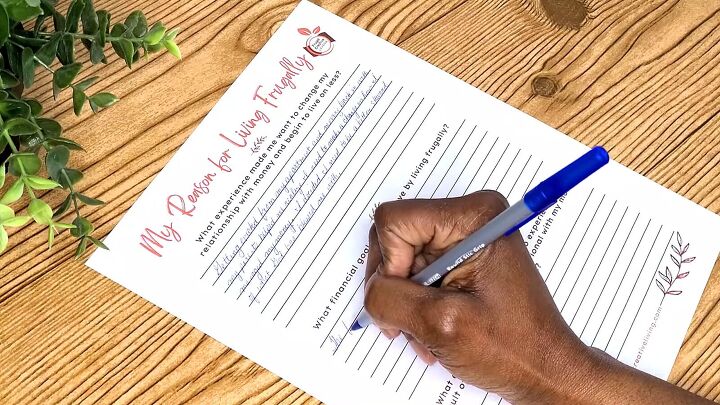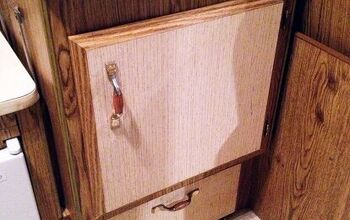5 Steps to Developing Frugal Habits & Managing Your Money

If you are new to the idea of frugal living and frugal habits, it might get a bit overwhelming. To help you get started, I have five primary steps to managing your money with intelligence and intentionality. Try adopting these frugal habits to save money and become more economically conscious.
Table of contents
Step 1. Identify your reason for living frugally
I have recently heard two great quotes: “Reasons come before results” and “The root of the word “motivation” is “motive”.
Ask yourself why you need to make this change. Is it for peace of mind? Is it to get out of debt? Do you want to save for retirement or some other future goal? Write this reason down, essentially creating a personal and financial mission statement. This mission is what will keep you motivated when you feel like reverting to those old habits.
When I first made my transition from being cheap to being frugal, I was 29 years old and living back at my parents’ house. My goal was to purchase a house of my own, but my real mission was to have a life I felt good about and live up to what I knew my potential was. I was able to move quickly in the right direction because I consistently kept my reason in the forefront of my mind. Identify and write down your “why” and place it somewhere where you can be reminded of it on a regular basis.
Step 2. Track your spending
One of the key steps in becoming intentional with your finances and your resources is knowing where your money is going. This is how you see where you can make changes. It is recommended that you track your spending for a 30 day period, and the information that you gather about your spending habits in this time is going to inform your monthly budget.
Each day keep receipts or quickly go through your bank account and write down your purchases for the day. Then, create categories for the purchases, such as car and gas, entertainment, groceries, clothing, et cetera. Seeing exactly what you spend your money on will help you figure out what things you do not need that are unnecessarily consuming your money.
Step 3. Set a budget
A budget sets boundaries. If you do not like the word “budget”, you can call it a money guide or a monthly financial plan, but this does not change the essence. The beauty of creating a budget is that it serves as an outline for how you are going to spend your money for the month. It helps you stay on track and measure your progress towards your financial goals.
Before a new month begins, take your specific expenses and categories from the 30 days of tracking and write them down. Next to that, write down how much you expect to spend in the month ahead, along with your anticipated income. If you find that your expected expenses exceed your income, adjust the budget so that expenses are lower than the income.
There are a variety of methods that you can choose for creating your budget, from the particular layout of your sheet to the rules you use to set limits. It takes time to figure out what works best for you, so most likely you will have to try a few different things before settling into the perfect process.
Step 4. Spend less by accepting alternatives
Use your spending tracker to see what you have been spending your money on, and then make a swap list to see what alternatives you can use. For instance, if you currently have premium cable, start by reducing the features or the number of channels you have. Alternatively, ditch it altogether and just opt for two or three streaming services like Netflix, Disney Plus, or Prime. If you eat out for lunch five times a week, reduce it to only Fridays as a treat for the end of the work week, and pack simple lunches or leftover dinners on the other days.
You can do a store brand challenge by swapping out the top brands that you are used to buying at the grocery store for the store brand or other low-cost alternatives. See if you and your family like the new options – you might find out that many of them are just as good as some of your favorites.
If you are anything like me, you can search through the reviews on certain items before making the switch to new brands. Ultimately, though, you have to make sure that you are comparing the prices so that there is a real cost saving. If you are not getting a better cost per unit, it may not be worth it to make that switch. In any case, the starting point is making that swap list and giving the alternatives a try.
Step 5. Create more
What can your hands do for you? What is it that you can learn to do with your own hands that will allow you to spend less money? Just look around your house. What can you recreate with the things right in your own living room?
If you feel like you need to redecorate your home but it will be too costly, what you can do is just rearrange and repurpose some of what you already have. YouTube is full of repurposing videos and DIY projects that you can use to help you save money. However, apart from helping you save money, scientific research shows that getting creative, no matter what your skill level is, reduces stress and induces positive health effects, including those of the heart.
Frugal living habits
Developing frugal living habits does not have to be stressful. Just follow these five simple steps and there is no telling what you can come up with when you decide to spend less and create more. What are the frugal spending habits that you have incorporated into your life? Let me know in the comments below!























Comments
Join the conversation